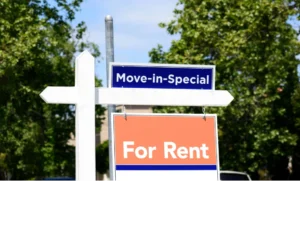Landlords can typically charge tenants reasonable costs for repairing an excessive number of nail holes, beyond normal wear and tear.

How Much Can a Landlord Charge for Nail Holes?: Secrets Unveiled
Landlords can typically charge tenants reasonable costs for repairing an excessive number of nail holes, beyond normal wear and tear. Small charges of $5-10 per hole to patch and repaint are common. However, minor wall damage from a few small holes for hanging pictures is expected.
Some landlords may charge a flat fee for repairs, while others may deduct the cost of repairing the nail holes from the security deposit.
The specific amount a landlord can charge for nail holes should be clearly stated in the lease agreement or discussed with the tenant before any repairs are made.
It is always best to communicate and clarify these details with the landlord to avoid any disputes or misunderstandings regarding the cost of nail holes.
The Landlord-Tenant Relationship
When it comes to renting a property, it’s crucial for both landlords and tenants to have a clear understanding of their rights and responsibilities.
A good landlord-tenant relationship is built on open communication and a shared understanding of the rules that govern the tenancy.
This includes knowing what repairs are the tenant’s responsibility and what charges the landlord can impose for damages, such as nail holes.
Importance Of Clear Guidelines On Repairs And Charges
Having clear guidelines is essential for landlords and tenants to avoid any confusion or disputes when it comes to repairs and charges.
By clearly outlining the responsibilities of each party in the rental agreement, there is less room for misunderstandings or disagreements down the line.
For landlords, it is key to provide tenants with a comprehensive list of what repairs they are responsible for, as well as a breakdown of any charges they may incur for damages beyond normal wear and tear.
On the other hand, tenants must fully understand these guidelines to ensure they can maintain the property and fulfill their obligations effectively.
Common Areas Of Confusion Between Landlords And Tenants
Despite clear guidelines, conflicts can still arise between landlords and tenants regarding repairs and charges.
Some common areas of confusion include:
- Disagreement on what constitutes normal wear and tear versus tenant-caused damages.
- Inconsistent enforcement of repair responsibilities leads to tenants being held liable for issues beyond their control.
- Unclear documentation of damages makes it difficult to determine the appropriate charges.
- Disputes over the reasonableness of charges for repairs and replacements.
To address these potential areas of confusion, it is essential for landlords and tenants to maintain open lines of communication throughout the tenancy.
Timely reporting and documentation of damages can help minimize disputes, while regular inspections can ensure that both parties are aware of any needed repairs or maintenance.
Paying Too Much For Insurance?
Get a FREE quote to insure your rental properties for less.
Determining Tenant Responsibility For Nail Holes
Determining tenant responsibility for nail holes is essential to understanding how much a landlord can charge.
It is important to know the rules and regulations regarding nail holes to ensure a fair and proper assessment of costs.
Normal Wear And Tear Vs. Tenant Damage
It is essential to understand the distinction between normal wear and tear and tenant damage when it comes to nail holes.
Normal wear and tear refers to the natural deterioration that occurs over time due to the everyday use of the property.
This includes minor scuffing, fading, and other common signs of use that one would reasonably expect.
On the other hand, tenant damage involves any intentional or negligent actions that result in excessive or unnecessary harm to the property.
Nail holes left behind from hanging pictures or mirrors can fall into either of these categories, depending on the circumstances.
Factors That Influence Whether Nail Holes Are Considered Tenant Damage
When determining whether nail holes should be considered tenant damage, several factors come into play.
These factors can include the number and size of the holes, the location on the walls, and whether the tenant received permission to hang items.
Additionally, the duration of the tenant’s occupancy and the overall state of the property can also influence this assessment.
For instance, a few small nail holes in inconspicuous areas may be considered normal wear and tear, while large or numerous holes in prominent locations may be deemed tenant damage.
Tips For Documenting The Condition Of Walls Before And After Tenancy
To ensure a fair assessment of responsibility for nail holes, it is critical to document the condition of the walls both before and after the tenancy.
Here are some practical tips to consider in this process:
Conduct a thorough initial inspection
Prior to the tenant moving in, conduct a detailed inspection of the property, paying close attention to the condition of the walls.
Take clear and timestamped photographs of each room, focusing on the walls and any existing nail holes or damage.
Include a detailed move-in checklist
Provide the tenant with a move-in checklist that outlines the condition of the walls and encourages them to report any pre-existing damage.
This will help establish a clear baseline for responsibility assessment later on.
Communicate guidelines for hanging items
Clearly communicate your guidelines for hanging items, such as using adhesive hooks or obtaining permission for nail usage.
Keep a record of any written agreements or correspondence regarding this matter.
Conduct a thorough final inspection
When the tenant is preparing to move out, conduct a final inspection of the property and specifically examine the walls for any new nail holes or damage.
Again, document the findings with clear photographs and written notes.
Compare before and after
Finally, compare the initial and final documentation to determine whether there are any new nail holes or damages that fall outside the realm of normal wear and tear.
This will help you make an informed decision regarding tenant responsibility.
Legal Limits On Charges For Nail Holes
Landlords are subject to legal limits on charges for nail holes.
Discover how much a landlord can legally charge for nail holes in rental properties.
Familiarizing With Local Landlord-tenant Laws
Prior to understanding the legal limits on charges for nail holes, it is crucial to familiarize oneself with local landlord-tenant laws.
These laws may vary from one jurisdiction to another and can greatly influence the rights and responsibilities of both landlords and tenants.
The Legal Limitations On Charging For Nail Holes
As a landlord, it’s important to know your rights when it comes to charging tenants for nail holes in the rental property.
Source: Rental Awareness













 Accessibility
Accessibility